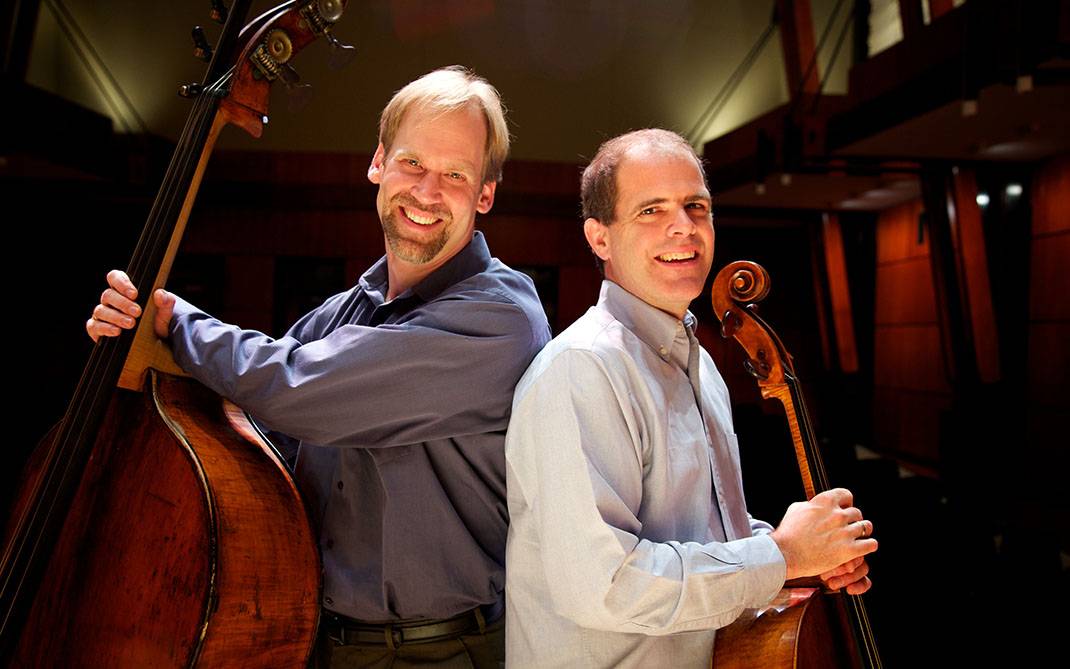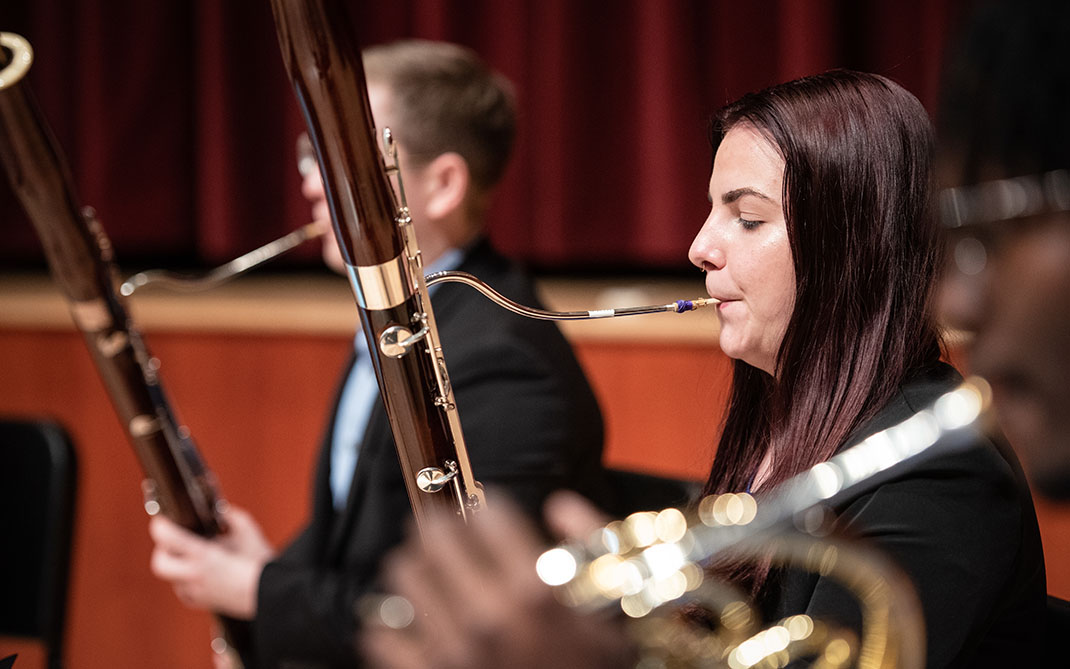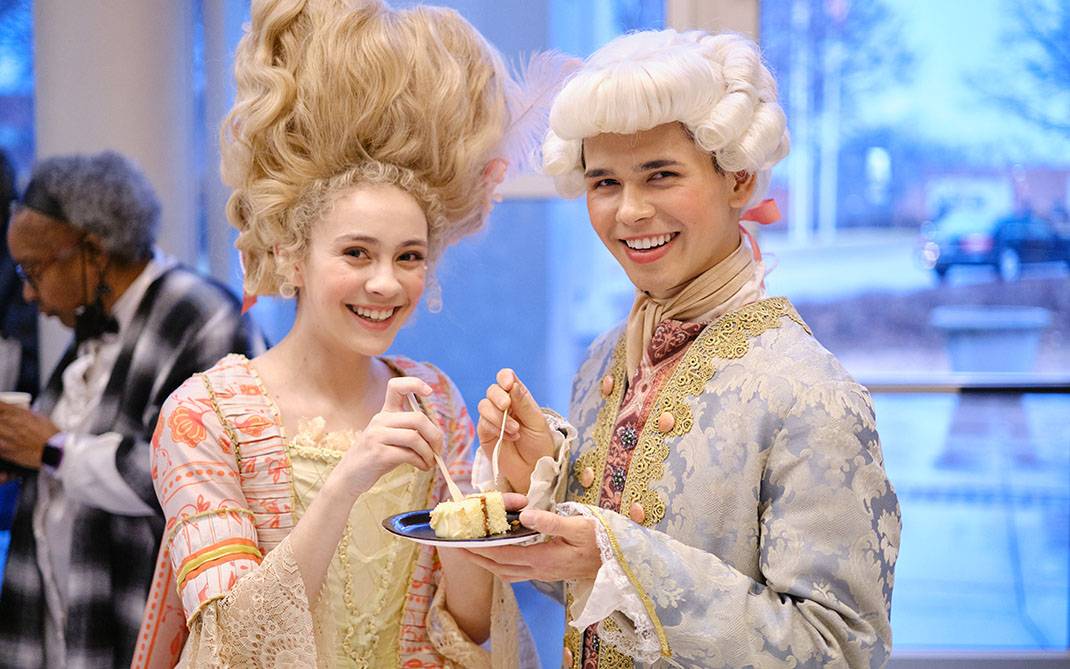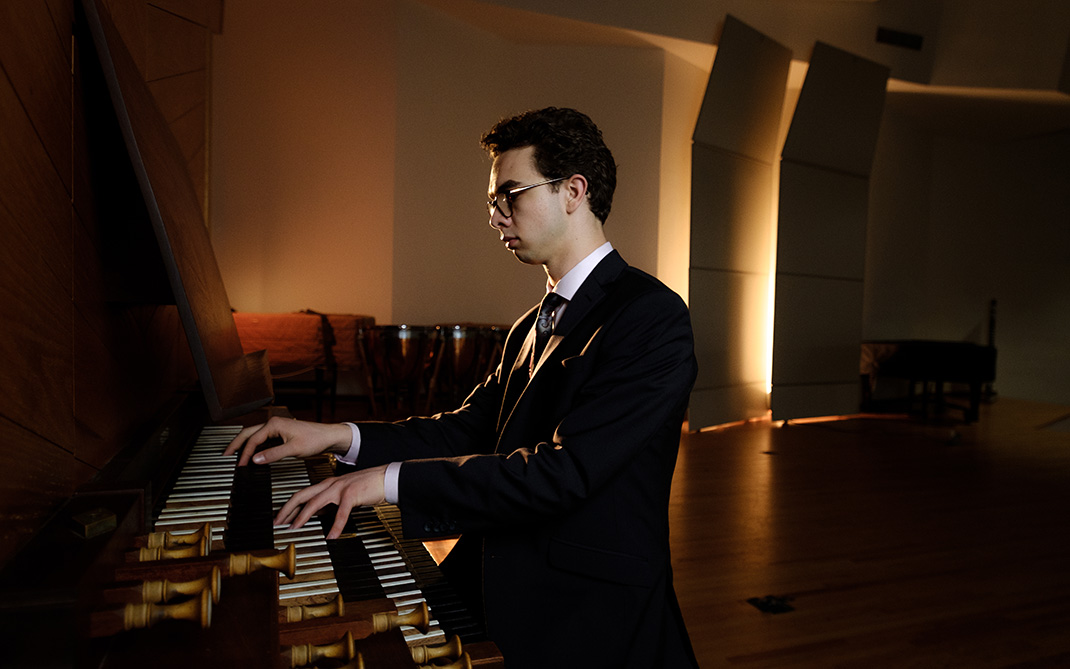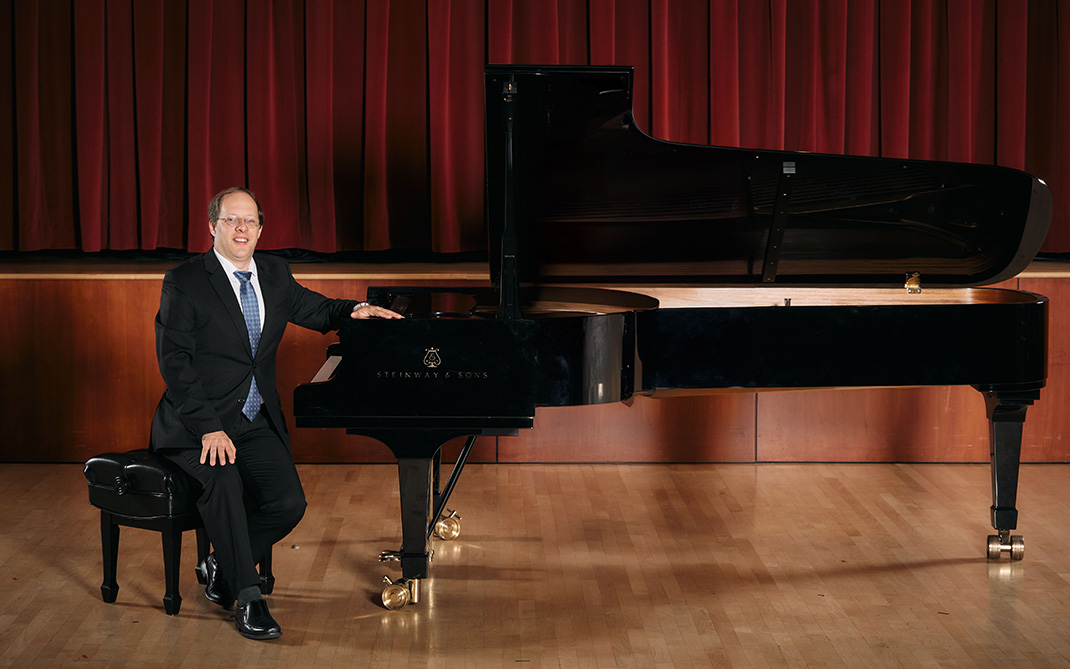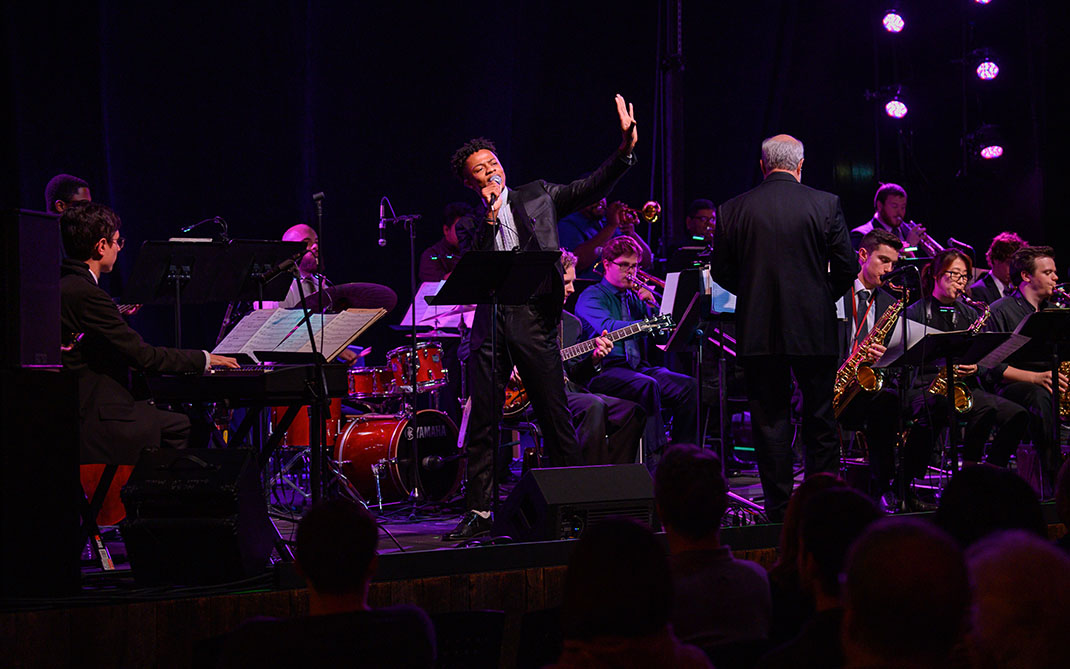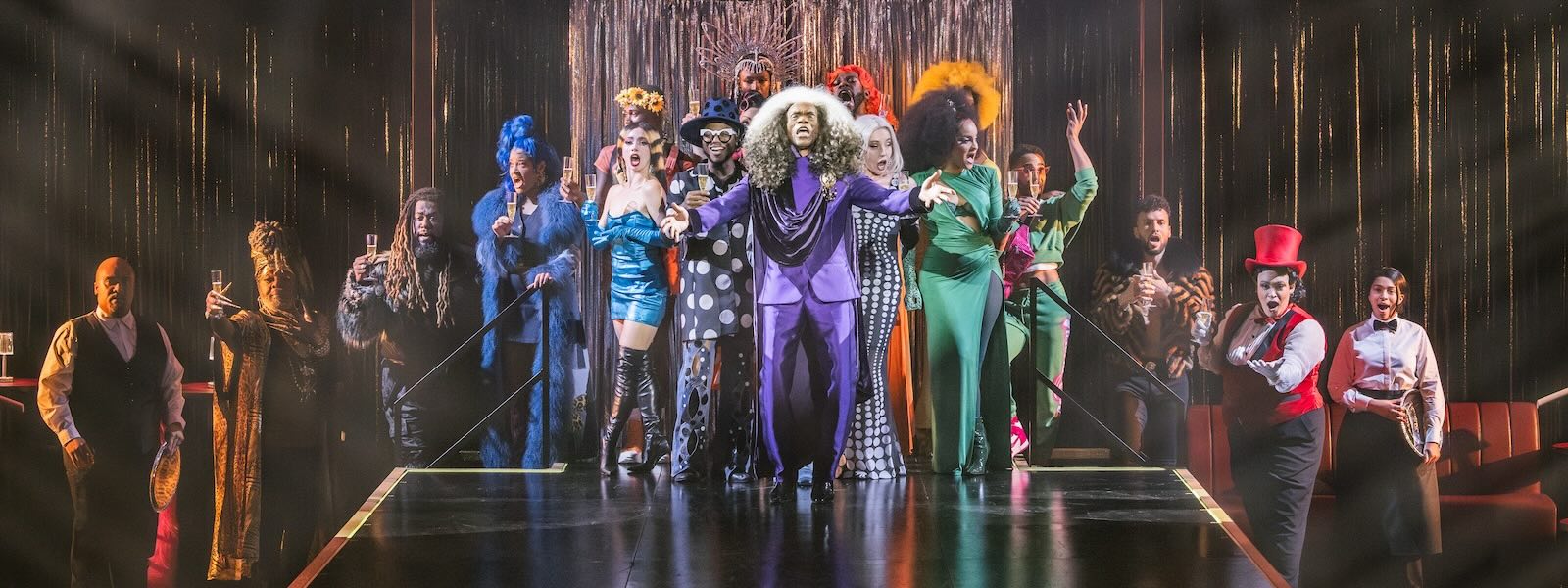Bill Rauch
The views and opinions expressed by speakers and presenters in connection with Art Restart are their own, and not an endorsement by the Thomas S. Kenan Institute for the Arts and the UNC School of the Arts. This interview has been edited for length and clarity.
Of all the tasks to undertake in the current arts climate, leading a brand-new multimillion-dollar performing-arts center through its opening and first season must be one of the most daunting. Yet, Bill Rauch, the inaugural artistic director of the Perelman Arts Center (usually referred to as PAC NYC) in Lower Manhattan managed to launch with a bang through an astonishing array of music, dance, theater and opera performances. He also capped the first season with a personal triumph, co-directing with Zhailon Levingston an inventive reimagining of the musical “Cats” set in New York’s drag ballroom scene. The production, titled “Cats: The Jellicle Ball,” garnered enthusiastic reviews and was immediately extended.
Although Bill has decades of experience as an artistic director and producer, his previous posts were markedly different from the current. Right out of college, he founded Cornerstone Theater Company, a firmly community-centered company that was initially nomadic, creating theater with and for small and often rural towns before it put down roots in Los Angeles in 1992. Cornerstone continued to make homegrown community-partnered theater in Los Angeles as well as in satellite projects around the country.
Then in 2007 Bill became the artistic director of Oregon Shakespeare Festival, which is a bit of a unicorn in the American theater ecosystem as one of the very few theaters in the U.S. with a full-time acting company. It is also one of a handful of destination theaters in North America, with patrons traveling from all over the country to rural Southern Oregon to enjoy a theatrical vacation. At OSF, while still centering Shakespeare’s works, Bill diversified the theater’s offerings and bolstered its new-play development program.
“Art Restart” was eager to speak with Bill to learn how he has adapted his heavily community-centered vision to the demands of leading New York’s newest cultural landmark, which opened during a particularly fraught time for so many of the city’s performing-arts institutions. Here he describes why and how PAC can thrive in today’s New York as a singularly welcoming hub for the countless communities throughout the city and its environs.
Choose a question below to begin exploring the interview:
- The stakes for “Cats: The Jellicle Ball” must have been pretty high since it was the first show you were directing at PAC NYC. How do you feel now?
- What did you put in the Yes column to start with when considering the job [at PAC NYC] and what was in the No or Maybe column? Were there any misgivings?
- Here you are, leading the brand-newest, most glittery cultural palace in New York City — but how are you adapting your Cornerstone ethos to your new responsibility?
- Are you finding that New Yorkers, people in the neighborhood, or even folks from New Jersey are starting to claim the space as their community hub?
- Was there a moment in these first nine months, a performance or an event, when you thought, “OK, this is the first step, and we’re going to make it”?
- Can you talk about how having artists on your board changes the dynamic? I’m wondering how you’ve seen the relationship between the artists and the non-artists on the board play out.
- What are the expectations from the board of directors that PAC will sustain itself through ticket sales? And where are you now in terms of that earned revenue?
- What do you think the biggest experiment you’re undertaking in your current leadership is? And how will you know when you’ve been successful?
- With your first season concluded, is there anything you wish you could go back and whisper to yourself six years ago when you accepted the position?
- Can you talk about your your next directing project?
Pier Carlo Talenti: The stakes for “Cats: The Jellicle Ball” must have been pretty high since it was the first show you were directing at PAC NYC. Or co-directing, in this case. How do you feel now?
Bill Rauch: You’re right, the stakes felt very high for so many reasons. It’s the first time I’ve been back in the rehearsal room as an artist working on a new show in five years. It’s the first time I have worked as a director at my new home institution. It was certainly both the most expensive to create and the highest box-office goals for this project. Having Andrew Lloyd Webber and his colleagues give their blessing but also of course really being closely involved in what it is we were doing with the material, there were a lot of pressures.
That said, it was a complete and utter joy to work on this project from beginning to end and continues to be. I’m feeling really, really happy because it’s not so often in life as an artist that everything that you hope to communicate is actually being communicated to many, many audience members. And the critical response … . All of it has been so aligned with our goals in doing the project. It’s so much about the ballroom community, and to have members of that community affirm the work and be seen in the work has been the most gratifying of all.
Pier Carlo: So you’ve witnessed that? You’ve talked to members of the ballroom community who are not in the show who’ve really appreciated it?
Bill: Absolutely, absolutely. We have two guest judges every night who have kind of a fun cameo judging four categories in the show, and those are almost always members of the ballroom community. Then of course there are other tickets going out to members of the ballroom community. Yeah, those affirmations have been the most meaningful to me of all.
Pier Carlo: I want to talk about your position as one of the newest major cultural leaders in New York now. You accepted the position about six, seven years ago, right?
Bill: Yeah, my appointment was announced in February of 2018.
Pier Carlo: What did you put in the Yes column to start with when considering the job and what was in the No or Maybe column? Were there any misgivings?
Bill: Oh, yeah. I was terrified honestly when I first had a conversation with the search firm, when they reached out to me about the possibility, because it is music, dance, opera as well as theater. I had a lot of fear about not knowing the other disciplines. I’ve been a theater artist my whole life, as you well know, and so I was scared about that. I was scared about the politicization of the site because there are so many strong feelings about the World Trade Center campus and what happened on 9/11. Just the site being on the ground of Port Authority-owned land, that means the State of New York and the State of New Jersey and the City of New York and all those stakeholders are involved. There was a lot that gave me pause.
But honestly what overrode all those hesitations was how moved I was that people felt that there needed to be arts and culture at the World Trade Center campus and that one of the most meaningful ways to rebuild after 9/11 was by creating an arts-and-culture facility. That moved me when I first heard about it, and it moves me to this very day. I think it’s pretty extraordinary because ultimately the response to hatred is love and the ultimate response to destruction is creativity and creation. To be able to affirm life, to be able to celebrate community by bringing people together at this location felt so meaningful and so potentially impactful.
And it’s not just 9/11, of course, because really there are 400-plus years of trauma and resilience in this part of the island, right? With everything from Dutch settlers and the massacre of Lenape and driving the Lenape people off the land through to enslaved New Yorkers being buried outside what was then city limits; the wave after wave after wave of immigrants that have entered our country through New York Harbor and through this part of the island; the Twin Towers being built as a symbol of international peace and then being destroyed; the act of rebuilding and including arts and culture. There’s just so much trauma and so much resilience in this part of the island.
We’re also at a transportation hub. There are 13 subway lines within three blocks of us, and the commuter train to New Jersey and the Staten Island Ferry are pretty close by, so we’re blessed with being at a true transportation hub that can bring people together from all five boroughs and from the Tri-State area. That felt really, really potentially impactful in terms of how we bring people together.
Pier Carlo: Once you accepted the position, signed on some dotted line somewhere, what was your first order of business and how much latitude did your board of directors give you?
Bill: Well, I gave the Oregon Shakespeare Festival almost 18 months’ notice — it was a good year and a half — and it meant that I was able to leave the Oregon Shakespeare Festival, I hope, in a responsible way, being able to oversee what became my final season, the openings of all those shows, and giving time and space for a search for my successor. And just trying to raise as much money as possible before leaving the company. So I was part-time on this job for a year and a half before my family and I moved to New York in August of 2019.
I would say building a team was absolutely the highest priority. In fact, I believe I’m the only full-time staff member still with the organization that was around then. It was an amazing but very, very small team of people who were really overseeing the construction project. So bringing in both our Director of Producing and Programming, Meiyin Wang, to begin on the programming vision and also hiring our Director of Civic Alliances, which is our name for community engagement.
Pier Carlo: Could you talk about choosing the term “civic alliance” to describe that role rather than “community engagement,” which has generally been used?
Bill: Yeah, you know language is a gift and a curse, right? Because there are all the associations that people have with language that’s already been used. We came up with the term civic alliances, just trying to be precise about the kind of relationships we hope to build with community organizations. It felt right because it was about building alliances, and they were civic alliances in terms of our civic responsibility and opportunities being here at the World Trade Center. We have both what we call anchor alliances, which are ongoing relationships that last year after year, and then project-based alliances that are more about a specific project we’re doing.
So as an example, we did a beautiful opera. The composer was Huang Ruo, the librettist David Henry Hwang, and they created an opera, “An American Soldier,” about Danny Chen, who was a first-generation young man who lived in Manhattan’s Chinatown. His parents are immigrants from China, and he served his country. He was in Afghanistan. He was so racially hazed that it ended in his death, so it’s a very tragic story. Because Danny was from Chinatown and because his parents and so many community members are still part of that community, it was very important for us to build alliances with organizations in Chinatown connected to that project.
Another example among many is we have an ongoing relationship with the New York Immigration Coalition because so much of the work that we’ve done has dealt with themes of immigration.
Pier Carlo: That’s one of your anchor alliances?
Bill: An anchor alliance, exactly.
I would say beginning to think about programming and beginning to think about our relationships with community organizations, those were the first two orders of business for sure.
Pier Carlo: One of the things I’ve learned by interviewing so many amazing artists changemakers — it’s a refrain I hear — is that the model of expecting people to arrive at a cultural palace and adhere to the rules of engagement there is outdated and that in fact perhaps the newer model is to bring art to the people, which is exactly what you did with Cornerstone.
So here you are, leading the brand-newest, most glittery cultural palace in New York City. You’ve made it very welcoming to all — and I know you can talk about that — but how are you adapting your Cornerstone ethos to your new responsibility?
Bill: It’s a really, really smart question, and I appreciate it. Yeah, I will say it is ironic because we used to talk in Cornerstone about bringing theater and creating theater in collaboration with communities as opposed to the marble palaces that often exist in cities that are cultural palaces. And yes, I do indeed work in a building that is sheathed in 5,000 tiles of marble. I’m aware of that irony.
I will say for the reasons I was describing earlier — because we are at a transportation hub, because we’re at a world-famous site that everybody in our city, in our country and in the world really has associations with because of the traumatic events of September 11th — I think we do have a rare opportunity to bring people together and create connections within our building. Because you can’t pass through our doors on the way in to see a performance or to leave having seen a performance … the 9/11 Memorial is right there. We are just a few yards away from the North Memorial Pool. It is right there; it is very present; it is our front yard. And so I do think that that invitation to reflect more deeply on who we have been and who we aspire to be as a society is just always present, and I think it impacts the work. I think that’s part of the power of bringing people into the building.
Very specifically, we do have an intimate lobby stage where we do a series of free performances every week, often every day, and the performance times bounce around. They often involve our anchor alliances and other community partners. They involve emerging artists, and they involve extraordinary established artists. All those performances are free, and our public spaces are open to the public free of charge from 11 a.m. to 11 p.m. every day but Monday. As one of my colleagues quipped, you don’t need a dollar and you don’t need a friend to enter PAC NYC. Everybody is welcome.
Pier Carlo: Are you finding that New Yorkers, people in the neighborhood, or even — since it’s a transportation hub — folks from New Jersey are starting to claim the space as their community hub?
Bill: Yeah. Look, we are nine months in, and I’m trying to remind myself of that every day because we’ve done so much work and we’ve welcomed so many people in. But we’re still not even toddlers yet, right? We’re nine months old. If we were a human being, we wouldn’t be walking yet. I am thrilled by how many people have found their way to us. And the number of people I talk to who’ve been to multiple events … . Of course, there are people who come because the subject matter of a work of art connects to their own lives, to their community, and we’ve seen a lot of that, but we’re beginning to build an ongoing audience of people who believe in the mission, who are excited by the work and who are coming back from multiple events.
Pier Carlo: Because I mean, for me, that would be the dream, right? That somebody who drops by a couple of times for the free concert looks around and says, “Oh, this looks interesting. I might actually buy a ticket.”
Bill: Pier Carlo, we have the same dream. We have the exact same dream. Yes, yes.
Pier Carlo: [Laughing] Glad to hear it. Your first season was so varied and honestly really exciting. Was your audience as varied as what you were offering?
Bill: Absolutely. It was really exciting to see audiences that, based on the discipline, based on the following of the artists, based on the subject matter of the work, shifted from piece to piece. For instance, the one project that we were able to do in this inaugural season that we had developed first at the Oregon Shakespeare Festival, at my former home, was The 1491s’ extraordinary comedy “Between Two Knees.” The 1491s are an intertribal sketch-comedy troupe. Some of its members, actually eventually all of the members, worked on the television show “Reservation Dogs.” They’re a remarkable group of artists.
They created a wonderful equal-opportunity-offender comedy about 90 years in a fictional Native American family, the history of that family. When all was said and done, we had critic’s pick from The New York Times, and many, many traditional theatergoers came to the piece. But the audiences were also 30% Native American, and for, I think, any large-budget cultural institution to have 30% Native audiences was certainly without precedent in my professional experience. That was really, really thrilling because New York City has the largest Indigenous population of any city in North America.
Pier Carlo: I did not know that.
Bill: But there’s the mythology, right, that there are no Native people in New York City because they were driven away. That is a very destructive mythology that exists. So anyway that was absolutely thrilling.
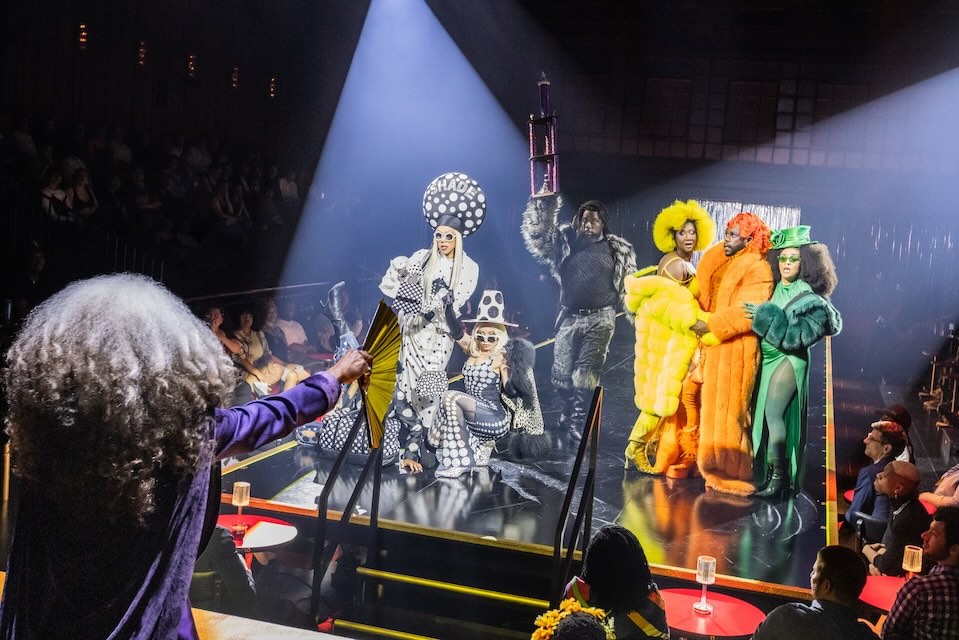
“Cats: The Jellicle Ball,” directed by Bill Rauch and Zhailon Levingston, 2024. Photo credits: Matt Murphy and Evan Zimmerman.
Pier Carlo: You mentioned PAC and you as its leader still being in your toddler stage. Was there a moment in these first nine months, a performance or an event, when you thought, “OK, this is the first step, and we’re going to make it”?
Bill: Honestly, I have felt that at so many times it’s hard to pinpoint one moment. Our first public programming was a series of five concerts on the theme of refuge that we created in collaboration with the musicians of Trinity Wall Street. We had artists from so many different ethnic backgrounds, racial backgrounds, religious backgrounds, artists from all over the world and also all over New York City. Each night was a different sub-theme of refuge. For instance, the first night was “home as refuge,” and it was for artists from other parts of the world who’ve made New York City their home. We had a night that was “faith as refuge,” with artists from various faith backgrounds, etc. There would be seven, eight acts in each concert that were bringing people together across such a wide spectrum of musical traditions and of cultural traditions. They were so moving, they were so moving! And it was like, this is why this art center was built. This is why I joyfully accepted the challenge of being its inaugural artistic director. It was right there in those first five concerts.
Pier Carlo: I looked up your board of directors, which of course has a lot of financially powerful leaders in New York, but I also saw at least three artists: The playwright, Mary Kathryn Nagle; the performer and writer, Anna Deavere Smith; and the film and theater director, Stephen Daldry. Was it your insistence that your board of directors should always have X number of artists? Is that on the bylaws?
Bill: You missed one.
Pier Carlo: I missed one!
Bill: Susan Stroman, the great choreographer. Susan and Stephen Daldry were already board members, and it was part of what attracted me to the job, honestly, that there were a few artists on the board and also that there was a group of artistic advisors that had been assembled. Some of them were people I either already knew and considered close colleagues or people that I admired that I wanted to know. That combination of some artists on the board and some really, really extraordinary artistic advisors really moved me and attracted me to the position.
Since then, we have added more board members. I was certainly a great champion of both Anna and Mary Kathryn being on the board, and we’ve added more artistic advisors as well, which has been fantastic because it’s a very informal network in terms of the artistic advisors, but so many beautiful projects and beautiful impulses have come to the organization through that network of artistic advisors.
Pier Carlo: You have attended thousands of board meetings by this point. Can you talk about how having artists on your board changes the dynamic? I attended board meetings many times, and what I saw when there was not an artist on the board was the chasm between the people who funded the theater and the people who were making theater. I’m wondering how you’ve seen the relationship between the artists and the non-artists on the board play out.
Bill: I am a big champion of artists being on a board of directors, because the board and the staff have a particular relationship. The board are essentially my bosses and the bosses of our remarkable executive director, Khady Kamara Nunez. I have lots to say about Khady, by the way. But they’re our bosses. And so to have peers at that board table who are fellow board members who can speak from the perspective of artists, who can talk about the work that’s happening, can talk about what it’s like to live the life of an artist and what artists need, it’s very impactful. It helps a board have a fuller perspective on what’s at stake in any given decision for sure.
Pier Carlo: At this point, how much pressure are you facing to prove success through your ticket sales? What are the expectations from the board of directors that PAC will sustain itself through ticket sales? And where are you now in terms of that earned revenue, if you don’t mind me asking?
Bill: I don’t know that I can give you numbers that would be completely accurate, but I will say one of the absolute most beautiful aspects of our building is its flexibility and its intimacy. We have 62 — that we’ve identified so far — 62 stage/audience configurations with our flexible spaces, and they’re all quite intimate. As an artist, I absolutely believe that some of the deepest work and some of the most impactful work can happen in the most intimate rooms, so as an artist, I cheer the intimacy of our spaces.
As a businessperson, of course, the intimacy is a challenge because it means we can only raise so much at the box office. So earned income is not the biggest slice of the pie for us, and I would daresay that it probably never will be. The biggest slice of the pie will always be heavily reliant on contributed income because of the intimacy of the venues. Again, that’s the building, that’s what was designed, and I embrace it and I celebrate it, but it does mean that contributed subsidy will always be necessary to create the most meaningful works of art we can.
Pier Carlo: I have a somewhat awkward question. Is getting funding for an arts enterprise in New York kind of a zero-sum game? Is everyone competing for the same cultural money, the same donors? And given that sadly so many New York performing-arts institutions are really struggling these days, does that make things awkward for you with other cultural leaders in the city?
Bill: I appreciate you raising a sensitive subject. Look, here’s what I will say. Sincerely, sincerely, we want to be part of the larger community of arts makers and arts institutions in the city. We want to collaborate.
One of our first commissioned dance works was with Big Dance Theater, Annie-B Parson’s company. Our opera that I referenced earlier, the orchestra was American Composers Orchestra, and that was a deep collaboration. And I can go on and on with examples. We want as many projects as possible to be collaborations with other arts organizations, both within our city and around the country and even around the world. We feel like in terms of viability of paying for the work, collaboration is essential. But it’s also, you know, we’re here at the World Trade Center. It’s about creating connections. It’s about bringing people together. It’s about really being in the business of creating hope. And so collaboration is really at the spiritual heart as well.
With all that said, it’s a very challenging moment for the performing arts in general. It’s a challenging moment for the performing arts in New York City. This was a very expensive building to build, and I’m not unaware of that potential tension, that all this money was spent to build a new cultural facility and that that might be challenging for some folks. But we are going to keep creating work that’s meaningful and that contributes to the big picture of performing arts for all the reasons that we’ve been discussing in this conversation, in terms of what we can do here at this location that can help other organizations in our city and that can be part of collaborations and that we can dig deep into with our alliances.
When people have said, “Does New York City really need another cultural institution?” my response to that is pretty clear. When every single person who lives in New York City, adult and child, every single person is living a performing-arts-saturated life, then we could maybe begin to talk about is there enough or is there too much.
I also feel when people have said, “Does New York City really need another cultural institution?” my response to that is pretty clear. When every single person who lives in New York City, adult and child, every single person is living a performing-arts-saturated life, then we could maybe begin to talk about is there enough or is there too much. But we have so many miles and miles to go before we collectively as a field are successfully reaching everybody who lives in our city. So much work to do.
So I do feel like the zero-sum game, it’s understandable why you would ask the question or why anybody would think about it, but I think that really only applies when you think about there being a very finite pool of audience or a very finite pool of resources. I just think from the audience viewpoint alone, there is so much work we have to do in the city and so much good work being done by so many of our peers, and we want to be part of that and we want to continue to elevate that.
Pier Carlo: Since you’re the inaugural artistic director, really what you’re conducting is a big experiment. What do you think the biggest experiment you’re undertaking in your current leadership is? And how will you know when you’ve been successful or that it’s proved to be a successful experiment?
Bill: I think any arts organization is an experiment at its heart. Certainly my 12 years at the Oregon Shakespeare Festival, I feel like everything we were trying over those 12 years was an experiment, and it was always in the tradition of innovation that the company had had in terms of trying new things and expanding the boundaries of what was possible at that destination theater in Ashland, OR. But obviously because we’ve just started nine months ago, the visibility of it being an experiment, it’s more exposed, right? It’s more exposed that it’s an experiment because it’s brand new.
I do think it’s about artists feeling at home in this building and wanting to create work in this building and audience members from many, many different walks of life here in New York City feeling at home in the building and coming to have their values affirmed and their values challenged. We need to be doing both. We need to be affirming values, and we need to be challenging values of any given audience member. I feel like if the artists keep wanting to work here and audience members keep showing up, then we’re doing something right and we’re doing what I hope we are doing, in terms of launching this organization.
Pier Carlo: With your first season concluded, is there anything you wish you could go back and whisper to yourself six years ago when you accepted the position?
Bill: Don’t put so much energy into being afraid of the disciplines that you don’t know anything about, because in a way, it’s all theater, it’s all storytelling. It’s all through these other extraordinary disciplines, whether it’s music or dance or opera or boundary-blurring works of art, that it’s hard to even categorize what they are. Multidisciplinary works of art. All of it lives in an impulse that artists have to share with audiences and to make connections with audiences.
I am the first to admit that my ignorance in the other disciplines is vast.
Pier Carlo: Less so now.
Bill: But I feel more, yeah, more confident that when artists have impulses and we’re able to help them realize those impulses — whether by commissioning, developing or presenting something — it’s the same work that I’ve devoted my whole life to. It’s just some different forms, which are really, really fun to be able to explore.
Pier Carlo: Have you announced your next season yet?
Bill: We have not. We have not. We’re trying to maximize our learnings from this year right on through our current run of “Cats.” I think it’s becoming more common that people are announcing chunks of years rather than a full year.
Pier Carlo: That’s interesting. So it’s kind of doing away with a traditional, “Here’s your 12-month season.”
Bill: Yeah, absolutely. At Oregon Shakespeare Festival, we always announced the entire season down to every single performance and exactly what time they would start, and I do feel like the current climate is calling for more flexibility and more agility in terms of being able to be responsive. We’re trying to hit all those balances.
Pier Carlo: I was going to ask you what project in the next season you’re most looking forward to. Instead, I’m going to ask if you can talk about your next directing project.
Bill: I don’t know what my next directing project will be at PAC NYC, but I can tell you that I am really honored to be working with the great theater composer and librettist Michael John LaChiusa on a new musical that he has written. We’re not sure where that will land in terms of when it might be shared with the world, but it’s been really fun to work on it.
It’s a project that deals with a total eclipse of the sun. We were actually able to do a little concert of excerpts of that project down in Waco, TX, and then experience totality together with this most recent eclipse. And that was a very, very powerful experience.
July 09, 2024
